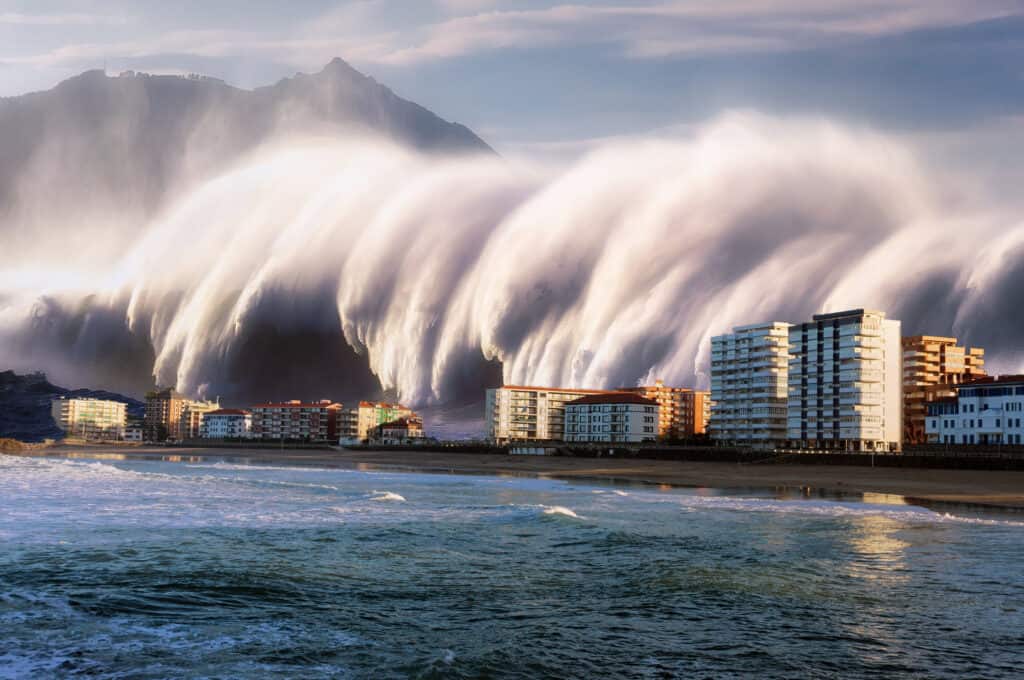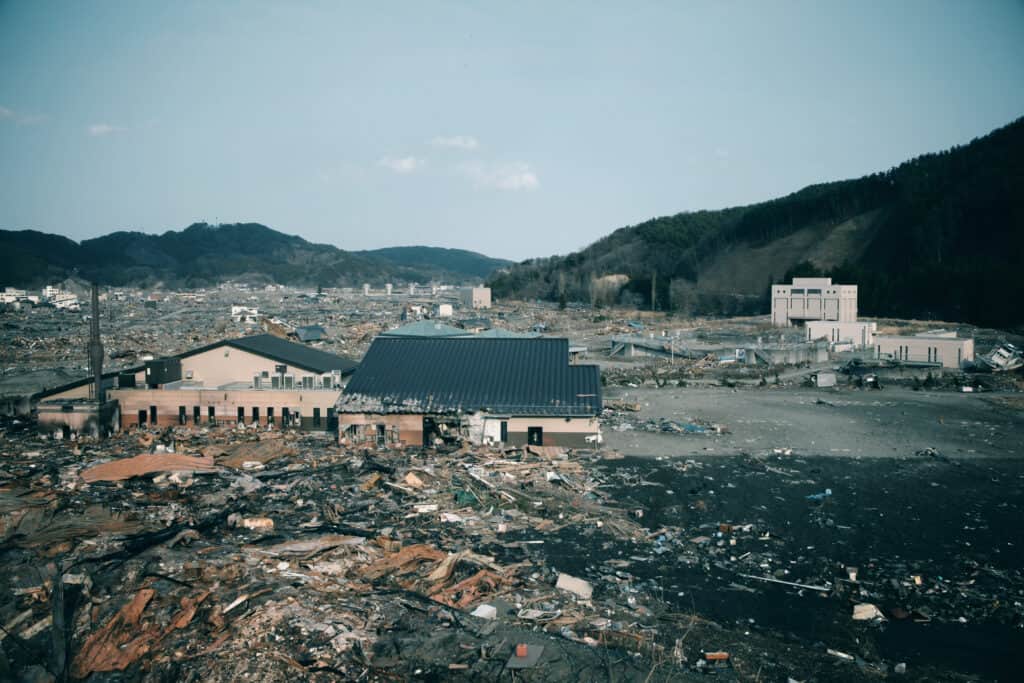San Diego is one of the most beautiful cities in Southern California, but is it ever hit by tsunamis? Today, we are going to take a look at the history of tsunamis in San Diego and find out if the city is especially dangerous for anyone worried about these natural disasters in particular. Additionally, we are going to look at why tsunamis occur and what you can do to avoid them best. Let’s get started!
Do Tsunamis Happen in San Diego?

A tsunami happening in
San Diego
isn’t likely, but it is still possible.
©Mimadeo/Shutterstock.com
San Diego has around 70 miles of coastline, meaning that the ocean is always knocking at the city’s door. Does having a coastline inherently mean that a city is susceptible to being hit by a tsunami wave? Technically, yes, but that doesn’t mean it’s likely.
San Diego, along with most of California, isn’t particularly at risk for being hit by a tsunami, although it would be impossible to rule it out.
San Diego isn’t particularly susceptible to a tsunami due to its location on the coast of Southern California, where the coastline is relatively straight and doesn’t feature any bays or inlets that could amplify tsunami waves. Additionally, the underwater topography (how the ocean floor is shaped) off the coast of San Diego is characterized by a gradual slope that does not lend itself to the formation of large waves. Still, it’s important to know that a tsunami could still occur if a large earthquake were to strike the Pacific Ocean floor, particularly in the Ring of Fire region, which includes the coasts of California, Oregon, Washington, and Alaska.
To cause a tsunami, certain conditions must be met. First, an event with a significant amount of energy must occur, such as an earthquake, volcanic eruption, or landslide, that causes a sudden displacement of water. The larger the displacement, the larger the resulting tsunami will be. Once the energy is released, the resulting waves will travel through the water, with the waves’ speed and direction determined by the ocean floor’s characteristics and the coastline’s shape. The time between the initial event and the arrival of the tsunami waves at the shore can range from minutes to several hours, depending on the distance from the source and the speed of the waves.
The Worst Tsunamis to Ever Hit California

The Fukashima
nuclear disaster
was triggered by an earthquake and tsunami.
©Fly & Dive/Shutterstock.com
There haven’t been devastating tsunamis to hit San Diego in recent history, although smaller ones have caused some damage to property. Over the last 150 years, San Diego has experienced 13 tsunamis large enough to cause damage or injury. Still, this number is higher than many might expect. With that in mind, let’s look at some of the tsunamis that have hit California in recent years:
- The 1964 Alaska earthquake tsunami: This was caused by a 9.2 magnitude quake off the coast of Alaska and killed 12 people in California, mostly in Crescent City, where it destroyed 289 buildings and caused $11 million in damage.
- The 2011 Tohoku earthquake tsunami: This was triggered by a 9.0 magnitude quake off the coast of Japan and killed one person in California, a man who was swept away by a wave while taking photos at Klamath River mouth near Crescent City.
- The 1812 Santa Barbara earthquake tsunami: This was generated by a 7.1 magnitude quake near Santa Barbara and killed at least two people on Santa Cruz Island, where it washed away several houses.
There are other tsunamis that have affected California’s coast, but they were either less damaging or less documented.
How to Prepare for a Tsunami in San Diego
If there was a tsunami in San Diego, there are a few preparatory options available now, and a few actionable steps to take were one to occur.
- Get your local tsunami evacuation map. You can find it online or at your local fire station. It shows you where to go if you need to evacuate due to a tsunami warning or advisory.
- Practice your evacuation route. Follow the signs that say “Tsunami Evacuation Route” or use a GPS device. The recommended distance to be safe is two miles inland and 100 feet above sea level.
- Put together or purchase an emergency “go bag” containing at least 72 hours of supplies. This includes water, food, flashlight, radio, batteries, first aid kit, medications, cash, copies of important documents, etc.
- Register your cell phone number and email address with AlertSanDiego, the County’s emergency mass notification system. Emergency responders use AlertSanDiego to send evacuation and shelter information during a disaster.
It’s always good to be prepared, even if an event like this never occurs. Peace of mind for the future is invaluable!
The photo featured at the top of this post is © Michael Vi/Shutterstock.com
Thank you for reading! Have some feedback for us? Contact the AZ Animals editorial team.






